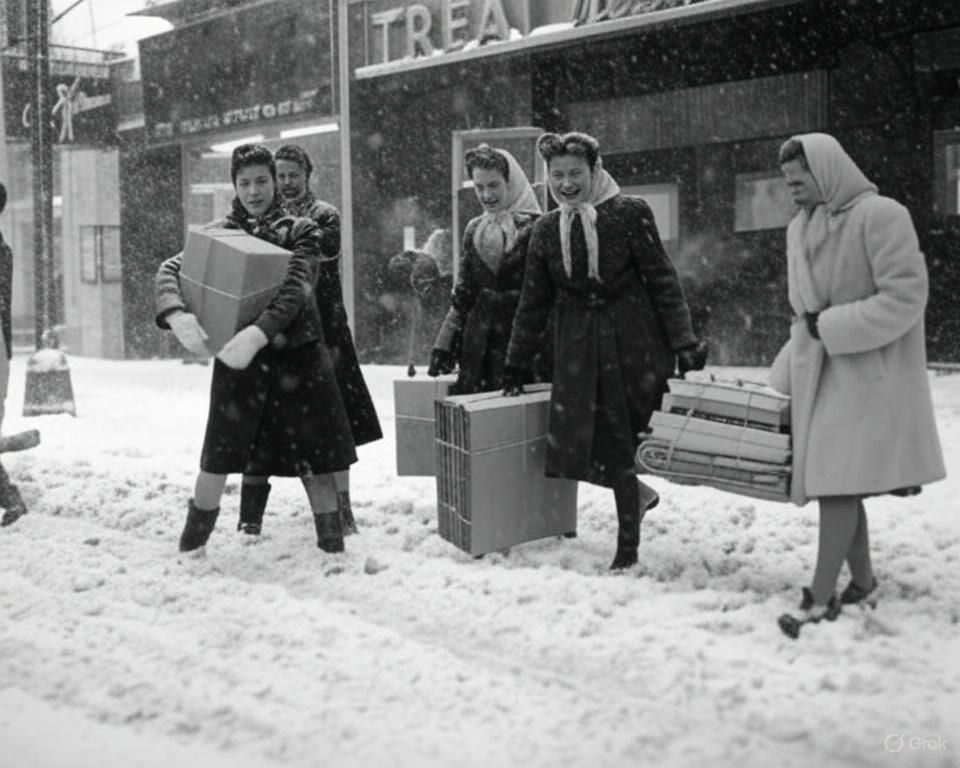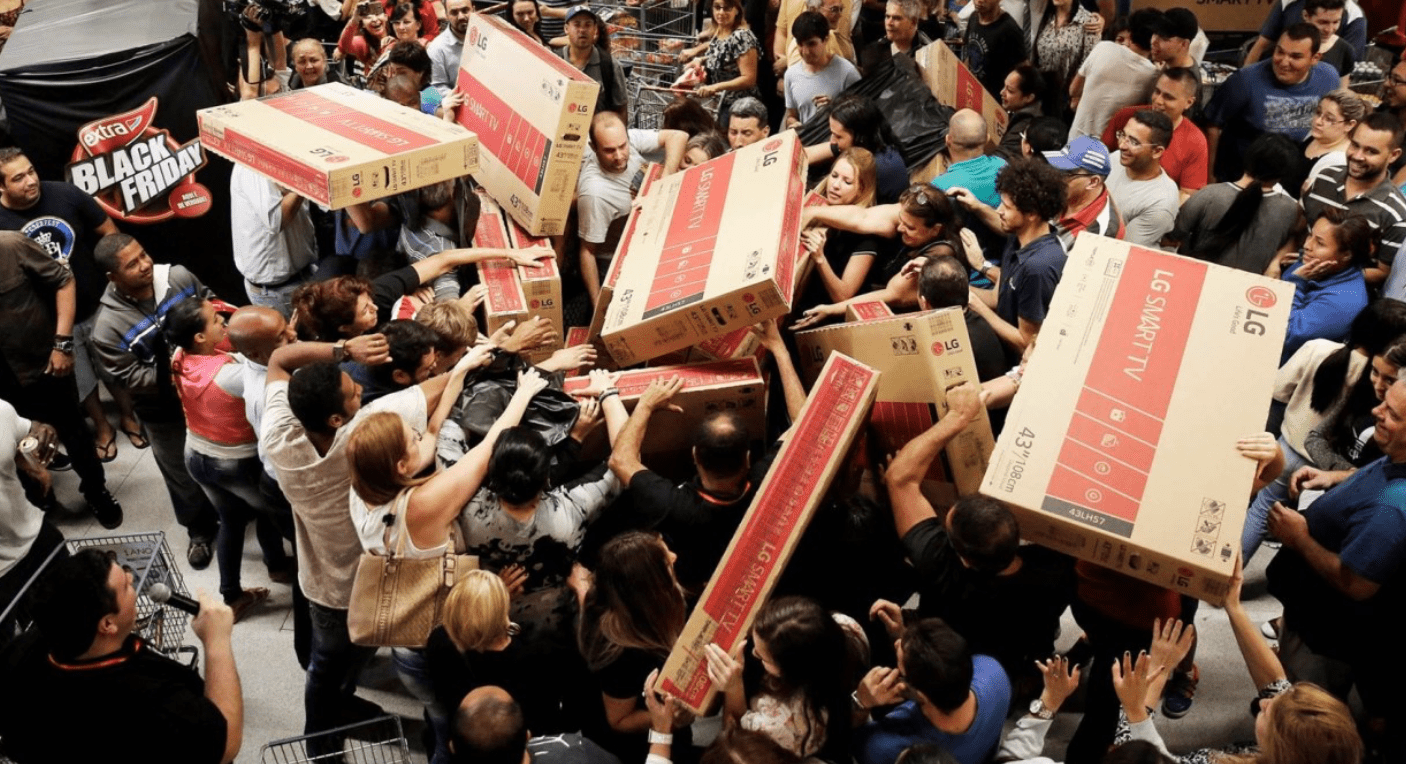MOST of us are old enough to remember the January Sales. The Christmas tree's starting to wilt a bit; the Bailey's is all gone; the cats are nosing at the bin containing the turkey carcass; that New Year's Eve hangover is getting worse instead of better. What better time for a bit of retail bargain therapy?
Of course we convinced ourselves that the January Sales were the best thing since sliced Christmas pudding, but in reality we were simply being sucked in by retailers trying to boost those flagging post-holiday sales by putting stickers on stock they were going to clear from the shelves anyway.
But now the January Sales – if they happen at all – start on Christmas Eve and the highlight of the bargain hunter's year is in the middle of the festive season – late November – and not at the end of it. But what is Black Friday? Why has it replaced the January Sales? And how the hell did we get landed with it?
A brief history of Black Friday, please
It's a Yank thing, you probably won't be shocked to hear. Worse, it has precious little application in Ireland or Britain because it's directly connected to the US Thanksgiving holiday, which takes place on the final Thursday in November and is a historic hangover from the pilgrim practice of celebrating the completion of the bringing-in of the harvest.
The day after Thanksgiving was traditionally the starting gun for the US Christmas season, rather as Halloween and the beginning of November has become the beginning of ours. As post-war car ownership boomed in the prosperous US of the 1950s and 60s, the Friday after Thanksgiving Thursday became an incredibly and increasingly busy day on the shopping and social calendar. The shops were so busy, the traffic jams so dense, that the day became known as 'Black Friday' – a phrase once associated with a devastating gold market crash of 1869.
THE GOOD YEARS: The postwar boom in US car ownership and spending resulted in big crowds and traffic jams as the Christmas season began
The words ‘Black Friday’ were suddenly guaranteed to strike fear and loathing into the heart of everyone venturing out the door. Sensing a threat, the various chambers of commerce around the US big cities began to knock their heads together to find a way of turning the 'Black' negative into a positive – and the concept of irresistible Black Friday bargain offers and sales took hold.
So how come we do it now?
The internet, of course, and Amazon, are absolutely, unamazingly right slap-bang in the middle of it. Since Black Friday had been an established thing in the US for decades, the arrival of the digital age meant that the Black Friday sales of US retailers online began to spread across the unbordered digital shopping space. And so anyone with a basic knowledge of a computer started to become as aware of the Black Friday phenomemon as the Americans.
Amazon turnover rocketed during the Black Friday sales and it wasn’t long before the shops began to demand a piece of the action. The location of the first Black Friday High Street shop sale in Ireland and Britain is debated and probably will never be known – but the date was more than likely autumn 2010, the year Amazon held its first Ireland/UK Black Friday sale, which was so popular that heavy traffic briefly crashed the site.
In 2013 Asda became the first of the major supermarkets to hold an in-store Black Friday sale this side of the Atlantic – the rest would follow within a year or two. It proved a massive success for Asda, although it saw an outbreak of the brawling and black eyes for which the day has now become infamous. Electronic goods with discounts of up to 70 per proved the main battleground.
Big business?
You betcha. The clever and cynical promotion of the Black Friday sales encourages queuing and promotes the idea that the strong will prevail. So much so that police and local authorities have contacted large retailers to warn them about inadequate security and poor planning leading to physical violence.
But setting shopper against shopper is retail gold. The appetite for Black Friday shows no sign of diminishing some 15 years after it reached these shores. UK figures for last year (November 29, 2024) showed another surge, with volume sales – predominantly of electronics, clothing, furniture and household appliances – up 7.7 per cent on 2023, itself a strong year.
Online sales continued to claim an ever-bigger chunk of the Black Friday money. But in-store bargains remain stubbornly popular with traditionalists. Shop spending remains generally static, with a fall-off in High Street spending being offset by a slight rise in spending at malls and retail parks.
While some economists argue that Black Friday simply leads to spending displacement, with shoppers holding off on spending earlier in the year in hopes of a Black Friday bargain, the high Black Friday spend, much of it impulsive as well as elective, pulls the year-on-year figures upwards.
The simple fact is that the US import is now a fixture in the Irish and British retail calendar and the changing spending habits it brings are here to stay too.
Watch your back
The surge in popularity of Black Friday has led to a rise in people getting their eyes wiped – particularly, but not exclusively, online.
If buying online, pay very close attention to the website that you’re visiting. Carefully check the URL (or site address), particularly when offers seem too good to be true, because online they usually are. If the website is a well-known one, it will be ultra-professional; if not, it will contain obvious pointers. Check for subtle tweaks to the company name, e.g. a changed single letter or a misplaced dot. Does the website have a return policy, full contact details, a privacy protocol? Basic spelling and grammatical errors on a website are a massive red flag.
And this year especially, be aware that the need to carry out these basic checks carefully is greatly increased by the rising use of AI-generated scams.

Be very suspicious about offers which stress urgency. If you’re asked to buy within a tightly compressed timeline there’s a high chance you’re being played. Similarly, don’t be forced into a purchase by a claim of scarcity. Reputable companies will either have sufficient stock or will quickly replace items when they run out. The rule of thumb is that when you feel pressurised or anxious about a purchase you need to double or triple your caution.
Use a credit card whenever possible as these provide you with a range of covers and mitigations if and when things go wrong.
When shopping in-store, avoid the urge to buy impulsively. Discipline yourself to get what you went there for and then leave. Retail outlets are masters at grabbing your attention with something you don’t want or need. Every shop floor on Black Friday is a minefield for your purse or wallet.
Don’t take anybody’s word – even a retail giant’s. That huge TV may indeed be the cheapest price around, and probably is, but it will only take you seconds to prove it by checking the price elsewhere on your phone. You would be absolutely staggered by the amount of people who don't take even this most basic of measures.
Ignore the letters RRP (recommended retail price) when they are used to contrast a sale price with an old price. The RRP is just that – the price the maker recommends the product should be sold for – and it may never have been sold at that price to begin with. Consider RRP meaningless for your purposes when hunting a Black Friday bargain.
At the end of the day, even in this age of sophisticated online frauds and artificial intelligence, the watchword is a simple one: caution. Your basic common sense, if applied correctly and carefully, is the best defence you have.
Happy shopping.



